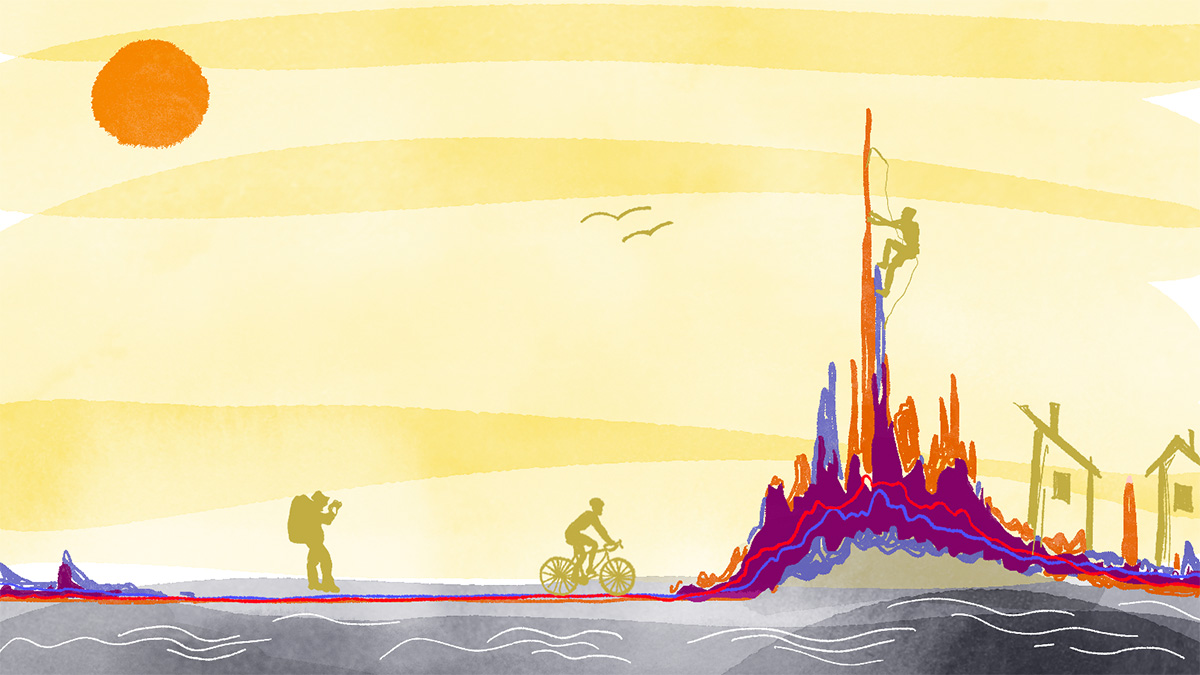
Caring about the Extremes
Combining resources to calculate flood risk in the Bow River Basin
John Pomeroy
University of Saskatchewan Centre for Hydrology, Dept. of Geography & Planning and Global Institute for Water Security
In early 2023 I was sitting in a meeting of the Bow River Basin Council in Cochrane, the first in-person meeting following the Covid pandemic. I was thinking about how the years of enforced isolation had perhaps dimmed the energy and sense of urgency related to water management in this important watershed where extreme flooding in 2013 had caused evacuation of more than 100,000 people and over 5 billions of dollars' worth of damage. It was most expensive natural disaster in Canadian history at the time. Then a municipal engineer turned to me and said, "John, the study we worked on with your group produced the best information we have ever had to draw on for planning floods and droughts. Those high-resolution model predictions have really helped us in our estimation of future flood risk." Clearly the 2013 floods were still fresh in the minds of the government managers who had had to deal with the aftermath.
This took me back to 2019, when our program had been asked to provide future flood predictions that would help engineers and planners design communities that are safer from future floods. There had been decades of studies of how water in the Bow River Basin behaved, but these had not been enough to provide adequate information on future flooding to the city.
Now we had promise of funding from the City of Calgary, and federal and provincial governments were contributing as well. We had worked together at a large water meeting in Ottawa at the national level with major government ministries to identify specific research gaps and needs. We had talked to the Government of Alberta in Edmonton about what could be done. With their encouragement, we then set out on a pilot project to demonstrate how future floodplain mapping might be informed by hydrological models by advancing the best dynamically downscaled climate and hydrology models we had – to provide estimates of future peak streamflows in the Bow and Elbow rivers.
We did this by using a remarkable dynamically downscaling climate model called WRF, run by Yanping Li and her students. She provided this to us at a high spatial resolution never accomplished before for Western Canada and it was able to resolve severe storms and mountain precipitation including the heavy rains of June 2013.We used the MESH hydrological land surface model provided by Alain Pietroniro of Environment and Climate Change Canada and adapted it for high mountains by adding slopes, elevation, glaciers, mountain winds and blowing snow, and then took into account downstream reservoir management on the Bow River. We coupled these to provide the most sophisticated modelling of current and future hydrology that we had seen applied in Canada – and it worked.
We were able to simulate the recent hydrology of the Bow and Elbow rivers -- including the flood of 2013, --reasonably well and then could look at how that hydrology would play out under the warmer, wetter, and stormier climate expected in the late 21st century.
As we made progress in this study we had quarterly meetings with scientists, water managers, and engineers from all levels of government. These helped to keep the work focused and track our progress. One issue that came up at one of the meetings was uncertainty: in places like the prairies, people care about extremes.
Our collaborators wanted to know about risks so that they could map them. The approach we had taken did not address uncertainty: our approach used what we thought were the best climate and best hydrological models to show the Bow River peaks, droughts and flows. But our single future weather and single hydrological model couldn't relay uncertainty and didn't allow us to fully explore the risks associated with future climate.
For the final phase of the work, the federal government came up with further funding to look at uncertainty. How were we going to do this?
Statistical hydrologists Simon Papalexiou and Chandra Rajulapati stepped up to show us how we could use coarser scale regional climate models -- which didn't represent realistic extreme rainfall and snowfall -- multiple times, to look at the effect of the variability of outputs from climate models on the risk of extreme streamflow. By combining this with the more accurate predictions of future weather from WRF, we could produce multiple realizations of future weather with climate uncertainty. This had never been done before.
Three months later we were able to calculate the likelihood of extreme future floods to better prepare the City's water managers. Joining up an understanding of engineering needs with scientific collaboration had created a very useful tool that we hope can be a model for how floods are predicted in the future in Canada and further afield.
Find out more:
Zelalem Tesemma, Kevin Shook, Dan Princz, Saman Razavi, Howard Wheater, Bruce Davison, Yanping Li, Alain Pietroniro and John Pomeroy 2020. Diagnosis of Historical and Future Flow Regimes of the Bow River at Calgary Using a Dynamically Downscaled Climate Model and a Physically Based Land Surface Hydrological Model. Centre for Hydrology Report #18, University of Saskatchewan
Rajulapati, Chandra, Zelalem Tesemma, Kevin Shook, Simon Papalexiou, and John Pomeroy. 2020. Climate Change in Canadian Floodplain Mapping Assessments: Final Report. Centre for Hydrology Report #17, University of Saskatchewan.
